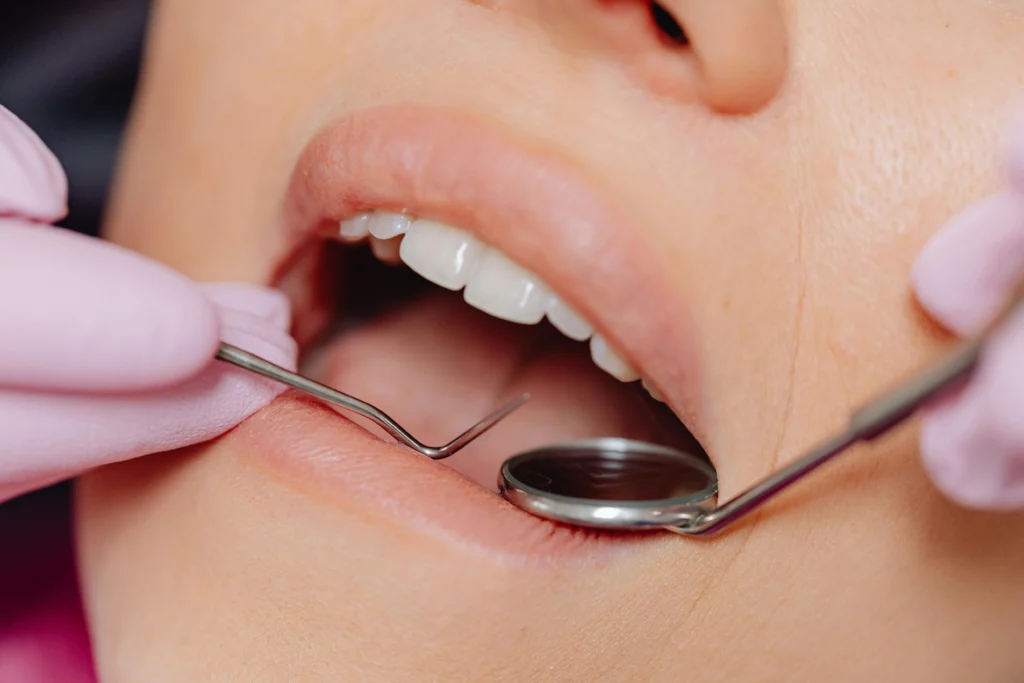Macrodontia is a rare dental condition where one or more teeth grow significantly larger than average, affecting dental aesthetics and oral function. Though uncommon, this condition can lead to self-esteem issues, bite misalignment, and other oral health challenges if left unaddressed.
Macrodontia refers to abnormally large teeth that disrupt the natural alignment of your bite and smile. While it can affect a single tooth or several, it is most often seen in the incisors or molars. This condition is different from general dental crowding or overgrowth; it specifically involves tooth size rather than quantity or spacing.
Many individuals discover they have macrodontia symptoms during routine dental visits. Identifying macrodontia in its early stages allows for timely intervention and better oral health outcomes. Although it’s more common in males, anyone can experience this developmental dental anomaly.

Understanding the causes of macrodontia is crucial for timely treatment and prevention of complications. Several factors can contribute to this condition:
With proper diagnosis, these root causes can be addressed effectively, minimizing the impact of macrodontia symptoms.
Recognizing macrodontia symptoms early can significantly ease the treatment process. Some common signs include:
These symptoms may vary depending on whether macrodontia is localized to a single tooth or affects multiple teeth.
Understanding the types of macrodontia helps in determining the appropriate treatment:
Each type presents unique challenges, but all can be managed through effective oversized teeth treatment options.
Effective oversized teeth treatment focuses on both aesthetics and functionality. Treatment options include:
All these oversized teeth treatment methods are personalized based on severity, type, and patient preference.
Although macrodontia can impact confidence and oral health, it is manageable. Regular dental visits help track changes and prevent complications. Practicing good oral hygiene is essential to avoid decay, especially since overlapping teeth can be harder to clean.
Moreover, seeking expert advice when noticing any macrodontia symptoms ensures early intervention. Addressing these issues proactively results in better oral health outcomes and improved self-confidence.
If you or your child show signs of unusually large teeth or bite discomfort, consult a dental specialist. Early diagnosis and timely treatment make a significant difference. Dentists use X-rays and visual exams to assess the condition and suggest the right oversized teeth treatment plan.
Dealing with macrodontia may feel overwhelming, but the right dental guidance makes all the difference. From diagnosis to personalized oversized teeth treatment, expert care can restore both comfort and confidence.
Should you or your child show any unusual tooth enlargement or related concerns, it’s best to seek prompt evaluation. Book a consultation with Unidental today and take the first step toward a balanced, healthy smile.
No, macrodontia is usually genetic or linked to hormonal factors. However, early detection can prevent complications.
Not directly, but it can lead to jaw discomfort or bite issues if untreated.
Yes, macrodontia symptoms often appear in children as their permanent teeth emerge.
Cosmetic solutions are optional but often chosen for improving appearance and oral function.
Orthodontics can help manage spacing and alignment, but may be paired with other treatments for best results.
Hyderabad : +91 6305 971445
Anantapur: +91 70758 90089
Goa: +91 83266 32500
Mon to Sat 10:00AM to 8:00PM
Sun 10:00AM to 12:00PM

Our goal is to provide friendly, caring dentistry with the highest standards in general, cosmetic, and specialist treatments. We strive to be the best dental hospital for comprehensive oral care.
We use advanced dental technology to deliver safe, precise, and painless treatments for every patient.